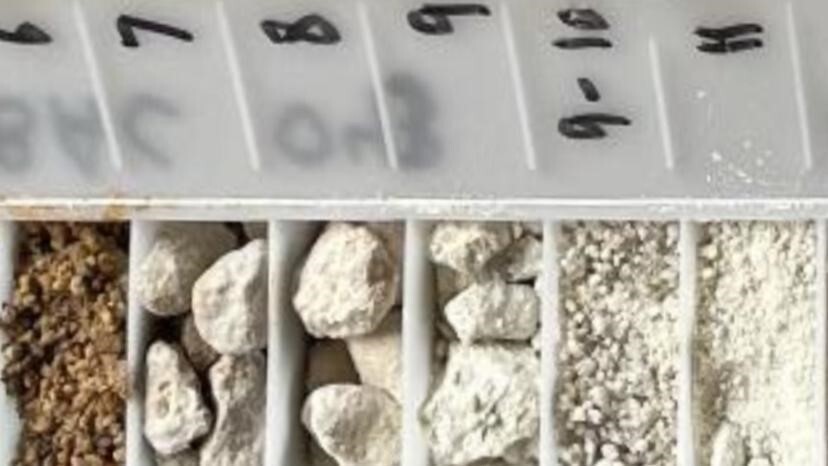

Allup Silica has uncovered a potentially significant kaolin clay deposit following an exploration campaign targeting silica and rare earths at its Pink Bark project near Esperance in Western Australia. Preliminary analysis of the initial samples indicated aluminium oxide (alumina) content within the range of 17 per cent to 20 per cent.

The company estimates the deposit between 700,000 and 1.2 million tonnes of kaolin spread across 69 square kilometres. To investigate further, they conducted an XRF analysis on eight selected samples. During the reconnaissance air-core (AC) drilling, which involved 41 holes averaging 20 meters in depth across two exploration licenses, totalling 823 meters drilled and logged at 1-meter intervals, the kaolin was observed in thicknesses ranging from 5 meters to 20 meters.
"The recent wide-spaced drilling program – aimed at near surface silica and underlying rare earths potential, has confirmed the presence of a thick kaolin zone under shallow cover, presenting an interesting opportunity given the presence of silica sand above and rare earths and uranium potential below. While our initial focus was silica sand, the recent discoveries of clay-hosted rare earths deposits in the region prompted us to investigate this exciting rare earths potential at Pink Bark," said Allup Silica managing director Andrew Haythorpe.
What is Kaolin
Kaolin, also known as kaolinite, is renowned for its non-swelling, soft clay texture, characterised by a plastic consistency and a white hue. It consists of hydrated aluminium silicate, a compound formed through the chemical weathering of aluminium-rich feldspar minerals found in granites and pegmatites. In the ceramics sector, the chemical composition of kaolin is often expressed in oxides, specifically alumina and silica, or as aluminium oxide and silicon dioxide, respectively.
In response to the recognised industrial significance of kaolin and the advantageous proximity of the company's project to the port of Esperance, management has dispatched an additional 56 samples for analysis. This initiative aims to enhance their comprehension of the resource's potential, with results anticipated before the conclusion of the upcoming month.
Haythorpe emphasises that the company intends to conduct in-depth assessments of the kaolin, including characterisation studies, to ascertain its quality and potential economic value. Should the findings prove promising, the company will contemplate further air-core (AC) drilling to refine the exploration target, thereby fostering a deeper understanding of the resource.
Kaolin enjoys widespread mining across numerous nations and serves as a vital raw material across various industries and applications. Commercial varieties of kaolin are distributed and transported in forms such as powder, lumps, semi-dried noodle, or slurry. 2021 global kaolin production was estimated at 45 million tonnes, boasting a collective market value of $6.4 billion.
Use of kaolin
Approximately 70 per cent of kaolin production is allocated to paper manufacturing, while in white ceramics, it can constitute up to half of the final product's composition. Beyond these industries, kaolin finds utility in various applications, including insulation, serving as a paint additive to enhance the efficacy of whitening agents like titanium dioxide, and modifying the properties of rubber when used as an additive. It also features prominently in adhesives, water treatment as an absorbent, and the modification of cement and geopolymers. Additionally, kaolin is utilised in cosmetics and numerous other niche applications.
Allup's Pink Bark project is situated in the burgeoning Biranup zone within the Albany-Frazer geological province, positioned to the north of Esperance. This zone has garnered attention for its abundance of valuable rare earths, corroborated by surveys conducted by the Geological Survey of Western Australia and recent geological exploration endeavours.



Responses






